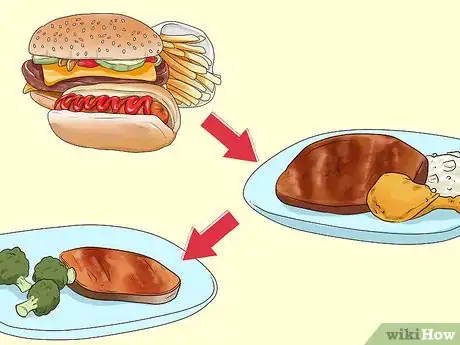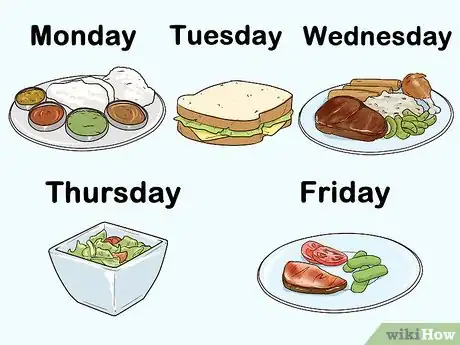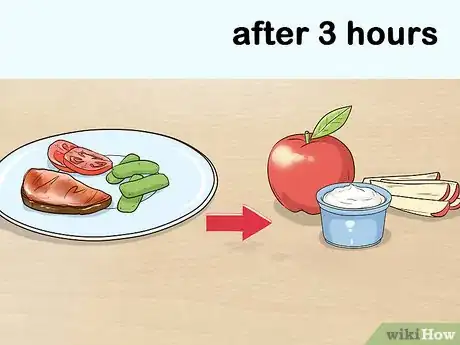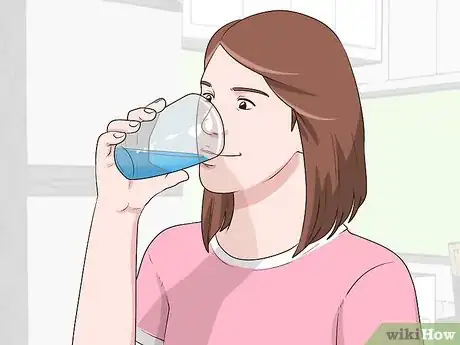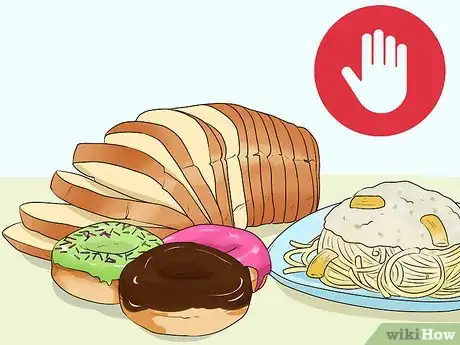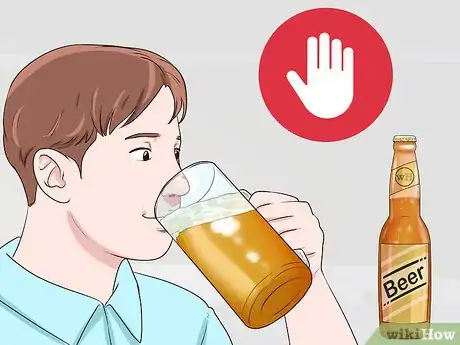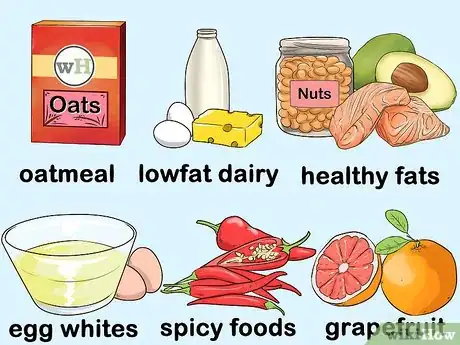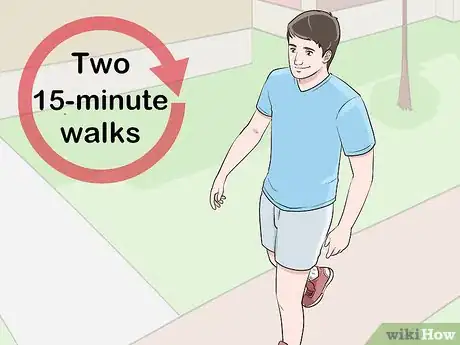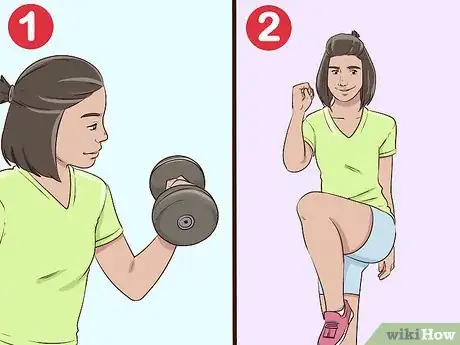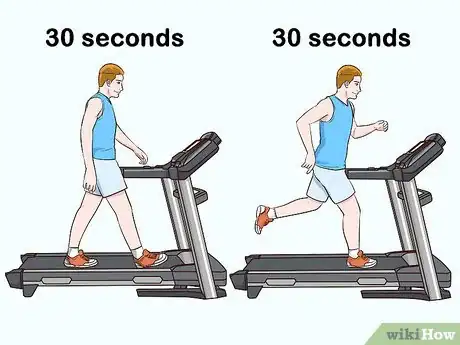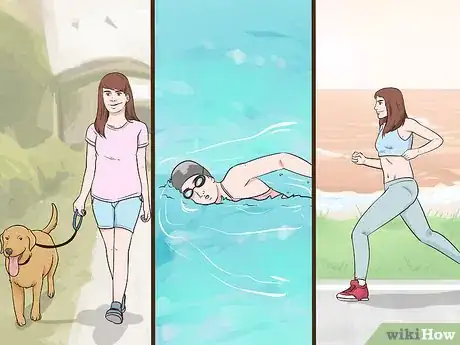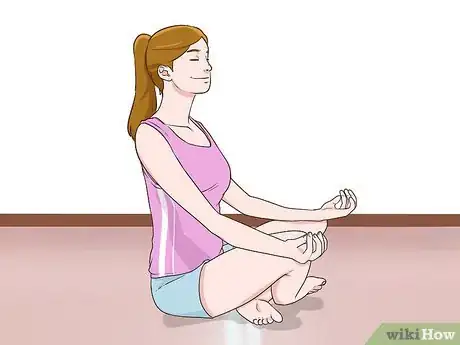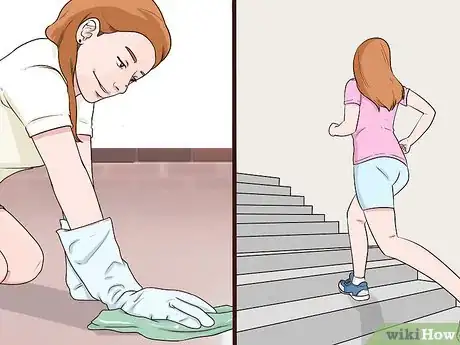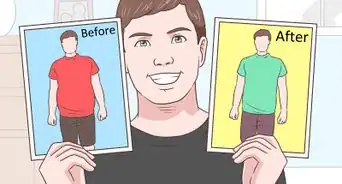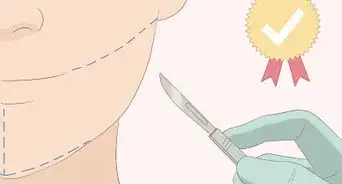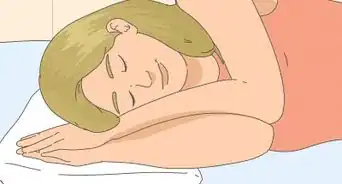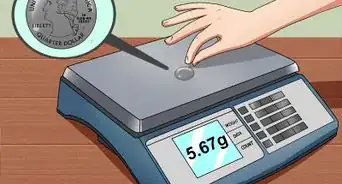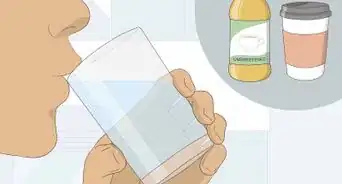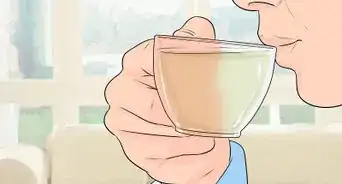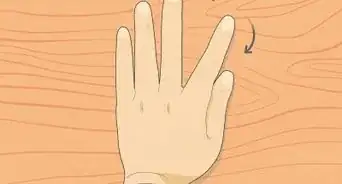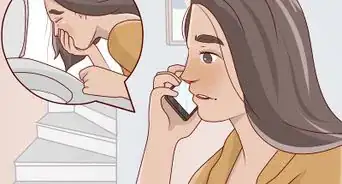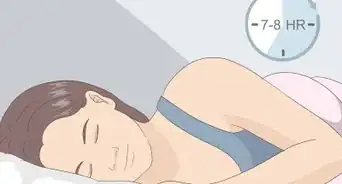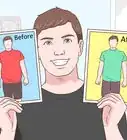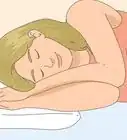This article was co-authored by Julian Arana, M.S.eD., NCSF-CPT and by wikiHow staff writer, Christopher M. Osborne, PhD. Julian Arana is a Personal Trainer and the Founder of B-Fit Training Studios, a personal training and wellness set of studios based in Miami, Florida. Julian has over 12 years of personal training and coaching experience. He is a certified personal trainer (CPT) by the National Council on Strength and Fitness (NCSF). He has a BS in Exercise Physiology from Florida International University and an MS in Exercise Physiology specializing in strength and conditioning from the University of Miami.
There are 13 references cited in this article, which can be found at the bottom of the page.
wikiHow marks an article as reader-approved once it receives enough positive feedback. This article received 12 testimonials and 86% of readers who voted found it helpful, earning it our reader-approved status.
This article has been viewed 445,616 times.
Body fat seems so easy to add and so hard to get rid of. You try to work out and restrict your calorie intake, and yet the fat still refuses to go away. There’s no need to worry, though—you can tackle your fat-burning goals head-on by making simple adjustments to your eating habits, food choices, exercise routine, and lifestyle. Here are 18 handy tips to help you put your best foot forward.
Steps
Expert Q&A
-
QuestionWhat's a good cardio exercise I can try that burns fat?
 Tiffany Stafford, CPTTiffany Stafford is a Certified Personal Trainer, Holistic Nutritionist, and the Owner of LifeBODY Fitness, a personal training and small group training studio based in Hillsboro, Oregon. She has over 15 years of personal training and coaching experience. She specializes in wellness training, life coaching, and holistic nutrition teaching. She earned her personal training certification from the National Academy of Sports Medicine (NASM).
Tiffany Stafford, CPTTiffany Stafford is a Certified Personal Trainer, Holistic Nutritionist, and the Owner of LifeBODY Fitness, a personal training and small group training studio based in Hillsboro, Oregon. She has over 15 years of personal training and coaching experience. She specializes in wellness training, life coaching, and holistic nutrition teaching. She earned her personal training certification from the National Academy of Sports Medicine (NASM).
Life Coach, Personal Trainer, & Holistic Nutritionist You can try doing mountain climbers. Get into a plank position and drive one of your knees to your chest. Go back to your starting position and drive your other knee forward. Alternate your knees to quickly raise your heart rate and burn calories.
You can try doing mountain climbers. Get into a plank position and drive one of your knees to your chest. Go back to your starting position and drive your other knee forward. Alternate your knees to quickly raise your heart rate and burn calories. -
QuestionHow do I reduce my facial fat?
 Michele DolanMichele Dolan is a BCRPA certified Personal Trainer in British Columbia. She has been a personal trainer and fitness instructor since 2002.
Michele DolanMichele Dolan is a BCRPA certified Personal Trainer in British Columbia. She has been a personal trainer and fitness instructor since 2002.
Certified Fitness Trainer Unfortunately, we can't target fat loss from any one place on our body. Instead, our bodies will use up fat from all over once we start losing weight--you could lose fat from your belly, hips, thighs, or arms before it starts to have an impact on fat around your face. Stay at a healthy overall weight and your face will suit you perfectly. And one perk to having fat on your face? Wrinkles will be much less pronounced.
Unfortunately, we can't target fat loss from any one place on our body. Instead, our bodies will use up fat from all over once we start losing weight--you could lose fat from your belly, hips, thighs, or arms before it starts to have an impact on fat around your face. Stay at a healthy overall weight and your face will suit you perfectly. And one perk to having fat on your face? Wrinkles will be much less pronounced. -
QuestionCan I eat potatoes each day and still burn the same amount of fat as I would if I didn't eat them?
 Michele DolanMichele Dolan is a BCRPA certified Personal Trainer in British Columbia. She has been a personal trainer and fitness instructor since 2002.
Michele DolanMichele Dolan is a BCRPA certified Personal Trainer in British Columbia. She has been a personal trainer and fitness instructor since 2002.
Certified Fitness Trainer It depends on just how many potatoes we're talking here! One medium potato has around 37 grams of carbs, so if you limit your carb count elsewhere, this is no problem. What you really have to watch out for are the toppings, like butter, cheese, sour cream, bacon, and rich sauces like gravy. Do some math to figure out how to balance the carbs from your potato and toppings with the other foods you eat.
It depends on just how many potatoes we're talking here! One medium potato has around 37 grams of carbs, so if you limit your carb count elsewhere, this is no problem. What you really have to watch out for are the toppings, like butter, cheese, sour cream, bacon, and rich sauces like gravy. Do some math to figure out how to balance the carbs from your potato and toppings with the other foods you eat.
Warnings
- Never starve yourself through excessive calorie restriction. Your body will shut down, and the health consequences can be devastating.⧼thumbs_response⧽
- It is advisable to consult with a doctor before starting a keto diet, according to most experts.⧼thumbs_response⧽
References
- ↑ http://www.cnn.com/2010/HEALTH/12/28/fastest.fat.burners/
- ↑ http://www.telegraph.co.uk/health-fitness/nutrition/is-calorie-cycling-the-new-fat-burning-secret/
- ↑ Julian Arana, M.S.eD., NCSF-CPT. Certified Personal Trainer. Expert Interview. 19 March 2020.
- ↑ http://www.mayoclinic.org/healthy-lifestyle/weight-loss/in-depth/metabolism/art-20046508
- ↑ http://www.webmd.com/diet/news/20040105/drinking-water-may-speed-weight-loss
- ↑ https://www.nih.gov/news-events/nih-research-matters/dietary-fat-vs-carbohydrate-reducing-body-fat
- ↑ Julian Arana, M.S.eD., NCSF-CPT. Certified Personal Trainer. Expert Interview. 19 March 2020.
- ↑ http://www.prevention.com/weight-loss/weight-loss-tips/new-research-on-how-to-lose-belly-fat
- ↑ http://www.cnn.com/2010/HEALTH/12/28/fastest.fat.burners/
- ↑ http://www.cnn.com/2010/HEALTH/12/28/fastest.fat.burners/
- ↑ http://www.cnn.com/2010/HEALTH/12/28/fastest.fat.burners/
- ↑ http://www.prevention.com/weight-loss/diets/boost-metabolism-high-metabolism-diet
- ↑ https://www.niddk.nih.gov/health-information/weight-management/myths-nutrition-physical-activity
- ↑ Julian Arana, M.S.eD., NCSF-CPT. Certified Personal Trainer. Expert Interview. 19 March 2020.
- ↑ http://www.washingtonpost.com/wp-dyn/content/article/2007/04/20/AR2007042001772.html
- ↑ http://www.cnn.com/2010/HEALTH/12/28/fastest.fat.burners/
- ↑ http://www.fitnessmagazine.com/workout/lose-weight/burn-fat/8-ways-to-burn-more-fat/?page=1
- ↑ Julian Arana, M.S.eD., NCSF-CPT. Certified Personal Trainer. Expert Interview. 19 March 2020.
- ↑ https://www.ncbi.nlm.nih.gov/pubmed/18362686
- ↑ http://www.forbes.com/sites/jennifercohen/2012/03/27/6-ways-to-burn-your-belly-fat-fast/
- ↑ https://www.nhlbi.nih.gov/health/resources/heart/obesity-guide-physical-active-html
- ↑ http://www.cnn.com/2010/HEALTH/12/28/fastest.fat.burners/
- ↑ http://www.prevention.com/weight-loss/weight-loss-tips/new-research-on-how-to-lose-belly-fat
- ↑ http://www.mayoclinic.org/healthy-lifestyle/weight-loss/in-depth/metabolism/art-20046508
- ↑ https://www.niddk.nih.gov/health-information/weight-management/myths-nutrition-physical-activity
About This Article
To burn fat, incorporate both strength training and aerobic exercise into your fitness regimen. Interval training and crosstraining are also great ways to burn fat through exercise. You can make dietary changes, like eating six small meals throughout the day instead of three, with protein-rich snacks in between, to rev up your metabolism and burn fat. Additionally, try reducing your intake of carbohydrates and increasing your lean protein consumption. To learn more about fat-burning exercises, read on!
